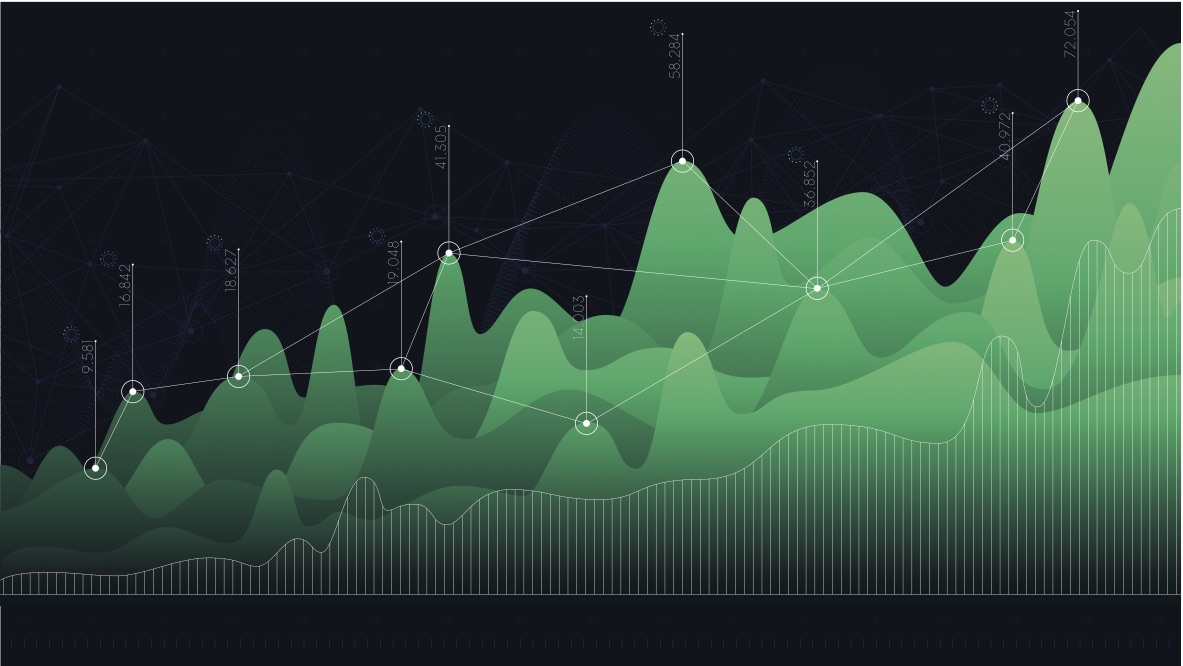Data-driven decision making isn’t as scary as it may seem. Basically, it means you consider relevant information and data-driven insights to make informed decisions.
Like painting a house, most of your time and effort will likely go into the prep work. The decision itself lends looking at your options to choose the best one and involving the right people along the way.
First, ask yourself what you want to learn and accomplish
Before you know what data-driven insights to gather to inform your decisions, you’ll probably need to start by asking yourself a few basic questions: what do you want to learn, or what problem do you want to solve? That will help you focus on specific objectives for your data-driven efforts.
Let’s say, for example, that you want to learn more about how learners are engaging with your learning program. You have some general L&D metrics on how last year’s program performed, but want to gather better details that can help you improve this year.
One problem you noticed with last year’s program is that a number of learners started but didn’t complete it, and overall learner engagement appeared to drop about halfway through. Your goal this year is to have a higher percentage of learners complete the program, returning for each week to learn and collaborate.
Next, plan how you will gather your data-driven insights
Now that you know what you want to learn and have an idea of what the problem is, you can ask deeper questions to gather data-driven insights. Consider both quantitative and qualitative questions to help you investigate the whole story.
Quantitative, descriptive insights:
A good place to start is with questions that will help you simply describe what’s happening, just the facts.
- What are learners engaging with?
- What are learners not engaging with?
- What’s unique to the most and least engaging parts?
- What is the trend in learner activity over time?
- When (or where) do learners tend to stop returning?
- What’s happening in the program at that time?
Qualitative, diagnostic insights:
Ask learners what they think and feel, or hold voice of the learner sessions to help you diagnose why what’s happening, is happening. You might be surprised by what they tell you and what you didn’t know.
- What do learners have to say about the learner experience?
- What was the best part, what wasn’t?
- What were challenges to completing the program, if any?
- What did they hope to get out of the program?
- How would they improve it?
After you’ve outlined the deeper questions you want to ask, there’s still some planning to consider. Identify the L&D metrics that are important to your insights and the data sources for your questions.
For example, how is engagement measured over time? Will it be defined by learner attendance and logins, completed items and views, or learner posts and comments?
Where will the data come from? Is that reliable? How and when will data be gathered? Is that feasible?
Whether you’re tracking L&D metrics throughout the length of your program, or just asking learners to complete a short post-program survey, try planning your data gathering efforts with SMART goals: Specific, Measurable, Achievable, Relevant, Time-bound.

Consider the nuances of your learning analytics
If you had answers to your questions, what could you do with that information? Remember, data-driven insights should align with what you want to accomplish.
Also, be conscious of qualities of the data itself that you are gathering. What’s the purpose of each question, and is it being asked in the right way?
The data you gather may tell you more about the program as a whole or specific parts of the program. It may also tell you more about the experiences of learners who did or didn’t complete it, and helpful details like successes, gaps, challenges, learner motivation, or sentiment.
Get the L&D metrics that matter ready for analysis
Once you have meaningful data related to your questions, it’s time to organize it and process it.
Combine L&D analytics to calculate overall results across the duration your program and the key parts that you’re interested in. Once the data is organized, you can review the learner engagement and qualitative insights to identify patterns and trends, and success areas or areas of concern. This will help you get a sense of how your program performed.
Start with the big picture and let the data guide you as data-driven insights emerge.
What do the data-driven insights indicate?
Here comes the fun part. Build a table by placing your questions in rows and then add columns for Themes, Ideas for Change, and Actions to Take. Look at the data that you’ve organized and begin making notes.
Themes:
Are there any patterns that emerged? What worked well, what didn’t? Is there anything surprising, or unusual? Is there anything missing?
Ideas for Change:
What ideas do you have for changes based on data you have? And be honest with yourself, what does the data tell you and not tell you? Do you have new questions?
Actions to Take:
What actions could you take, and what do you think will happen as a result?
Take incremental action
Get a second opinion and involve others by sharing your data, story, and communicating what you see as your options. Based on what you now know, or don’t know, decide on next steps to make your improvements happen – your data driven strategies.
Refine and repeat your process to continue working towards your goal and validate changes in future programs. As you establish L&D metrics over time, you can gain insight into how to apply successful improvements.
Ready to leverage the power of data-driven learning in your organization? Discover how Intrepid’s cohort-based learning platform enables you to implement data-driven strategies, optimize learning experiences, and drive measurable results for your workforce. Schedule a time to chat with a learning advisor today!
Frequently asked questions with data driven insights
What are data driven insights in L&D?
Data-driven insights in workplace L&D use data to understand learning needs, personalize experiences, improve programs, and demonstrate their value, ultimately leading to better business outcomes.
Why is data important in L&D?
Data-driven insights in learning and development (L&D) refer to valuable conclusions drawn from the analysis of relevant data to refine learning strategies and improve the effectiveness of L&D initiatives.
Resources:
- https://online.hbs.edu/blog/post/types-of-data-analysis
- https://www.qualtrics.com/experience-management/research/data-analysis/
- https://soeonline.american.edu/blog/data-driven-decision-making-in-education/
- https://www.acceldata.io/article/what-is-data-reliability




